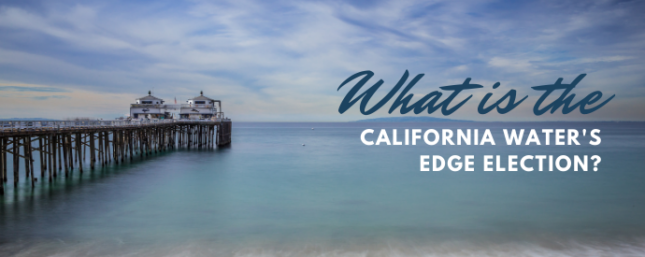
What is the California Water’s Edge Election?
What is the California Water’s Edge Election? And should your startup use it?
Many startups we work with operate in the state of California and also have foreign subsidiaries. This can lead to complex tax situations, including the issue of determining income for the unitary group of corporations (typically consisting of a U.S. parent corporation and one or more foreign subsidiary corporations). The U.S. parent corporation must decide whether to determine CA income on a worldwide basis or a water’s edge basis.
California allows corporations to elect to compute income attributable to CA sources on a water’s edge combined report (Form 100W, instead of Form 100). This election results in the exclusion of affiliated foreign corps from the combined CA report, since they are usually not subject to CA tax. This means only the U.S. corp would be required to pay CA tax on its own CA sourced income. The election is made via Form 100-WE and must be attached to a timely filed original return Form 100W. The election lasts for 84 months (7 years).
Given the length of the election, it is important to consider which method will be more beneficial in the long run.
- If the foreign sub is in a loss and is expected to continue generating losses for years to come:
- Including the loss on a worldwide filing could be beneficial by reducing total taxable income.
- Important note: If the foreign sub is currently in a loss, but is expected to start generating income soon, you may want to opt for the water’s edge election for the reasons listed below.
- If the foreign sub is generating income:
- Including the income on a worldwide filing would not be beneficial. This could end up increasing taxable income apportioned to CA.
- However, it’s important to note that the foreign sub’s sales could dilute the CA apportionment factor, which may offset some (or all) of the increase in income.
For example, let’s take a look at a California C corp with one foreign subsidiary corp (100% owned) located in the United Kingdom. The CA entity has $100,000 in net income and $500,000 in sales (all in CA). The foreign sub has $50,000 in net income and $150,000 in foreign sales. Let’s see the impact of the water’s edge election below.
| Water’s Edge Election | No Election (Worldwide) | |
| Form | 100W | 100 |
| Income (Loss) from foreign sub | Excluded | Included |
| Sales apportionment factor | Excluded | Included |
| CA apportionment % | 100% | 76.92%* |
| Net income on CA return | $100,000 | $115,385** |
*500,000 CA sales divided by 650,000 everywhere sales = 76.92%
**150,000 in net income multiplied by 76.92% apportionment = $115,385
Let’s look at the same example, but say the foreign sub has a $50,000 loss instead of profit.
| Water’s Edge Election | No Election (Worldwide) | |
| Form | 100W | 100 |
| Income (Loss) from foreign sub | Excluded | Included |
| Sales apportionment factor | Excluded | Included |
| CA apportionment % | 100% | 76.92%* |
| Net income on CA return | $100,000 | $38,462** |
*500,000 CA sales divided by 650,000 everywhere sales = 76.92%
**100,000 – 50,000 = 50,000 in net income multiplied by 76.92% apportionment = $38,462
When the foreign sub is generating a profit, taking the water’s edge election is more beneficial, as the foreign income is excluded from the CA return. However, when the foreign sub is in a loss, it is more beneficial to not take the election. There are a number of complexities and nuances to consider before making the California water’s edge election, many of which are outside the scope of this article. Please consult with a qualified tax professional before making any elections.
IRS Circular 230 Disclosure
To ensure compliance with requirements imposed by the IRS, we inform you that any U.S. federal tax advice contained in this document is not intended or written to be used, and cannot be used, for the purpose of (i) avoiding penalties under the Internal Revenue Code, or (ii) promoting, marketing, or recommending to another party any transaction or matter that is contained in this document.